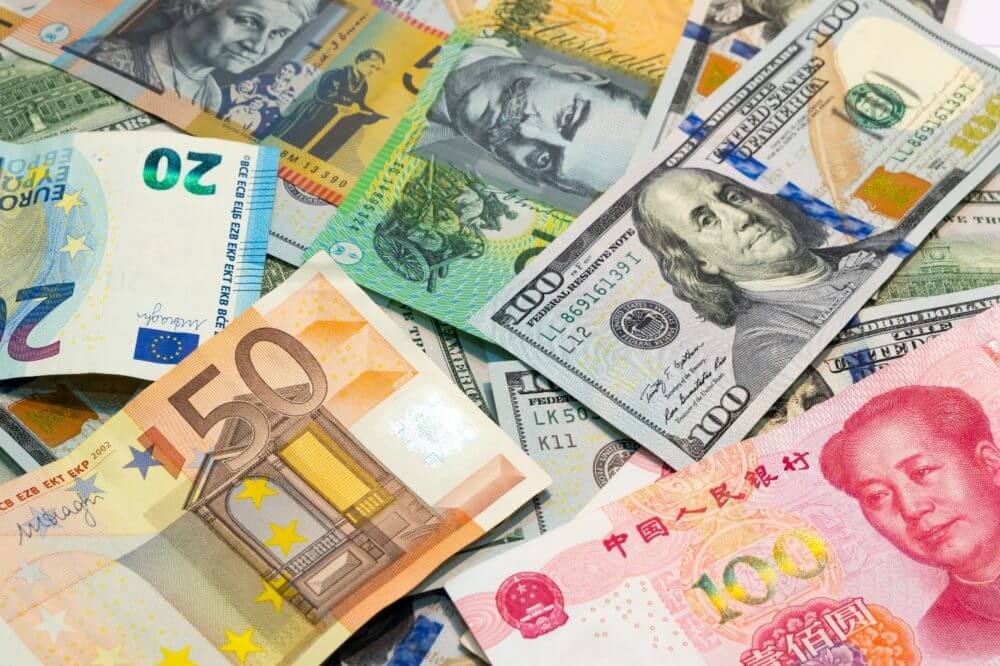The U.S. dollar remained rangebound on Monday. The forex market was subdued due to the holidays. Even the Federal Reserve’s hawkish turn was unable to rally currency. Policymakers recently signaled three quarter-point rate hikes in 2022. On Monday, the dollar index climbed up 0.1% at 96.23 against six major peers, exchanging hands near the midpoint of the trading range, which it has maintained over the past few weeks.
Meanwhile, risk-sensitive currencies were mixed. The Australian dollar tumbled down by 0.2%, while the euro declined by 0.1% today. On the other hand, the British pound surged forward by 0.2%.
In Asia, the Turkish Lira plummeted down by almost 8% against the greenback on Monday. Investors are concerned because of Turkey’s monetary policy. The Lira skyrocketed by more than 50% last week. Billions of dollars of state-backed market interventions caused the currency’s rally. A government move to cover forex losses on certain deposits also supported the Lira last week.
However, on Monday, the Turkish currency plunged to as low as 11.6 against the dollar before rebounding slightly to trade at 11.35. QNB Invest stated that the main exchange rate resistance is at 11.45 and 12.0 currently, with support levels of 10.25 and 10.57. Last week’s jump brought the Lira back to mid-November levels.
The currency collapsed to an all-time low of 18.4 per dollar last Monday after a months-long decline due to fears of soaring inflation. A succession of interest rate cuts engineered by President Tayyip Erdogan boosted the latter to the concerning heights. Despite its unexpected surge, the Lira is still 35% weaker than it was at the end of last year.
How did Erdogan try to boost the currency?
Last Monday, Turkey’s President unveiled a scheme under which the central bank and Treasury would reimburse losses on converted Lira deposits versus foreign currencies, causing the Lira’s biggest intraday rally.
According to official data, the Turkish citizens did not sell greenbacks in large quantities on Monday and Tuesday of last week. Thus, they had likely played a little role in the gains. On the other hand, state interventions cost the central bank more than $8 billion during the last weeks.
Overall, the bank sold $1.35 billion in direct forex interventions at the beginning of the month. It attempted to support the currency while the latter remained around 13.5 per dollar. Erdogan declared in the interview that Turks showed confidence in the local currency. Consequently, deposits increased by 23.8 billion Lira after the government announced the anti-dollarization plan.
Nonetheless, the BDDK banking watchdog’s data showed that individual Turkish depositors held $163.7 billion of hard currencies last Tuesday, even after a heavy accumulation of greenbacks during the previous week. That number is almost the same as it was on Monday and Friday when the total showed $163.8 billion.
Last week, backdoor dollar sales by state banks boosted the Lira. The central bank supported the exchange. Erdogan pressured the bank to cut its policy rates by 500 basis points to 14% since September, even though inflation has risen to more than 21%. Economists predict that prices may rise by more than 30% next year due to the Lira depreciation.
What about the EM currencies?
The Thai Baht decreased on Monday in Asia as soaring cases of the Omicron Covid-19 variant dimmed tourism prospects. The virus also stoked worries of a slowdown in economic recovery.
The infection cases have risen sharply in China and Japan, as well, leaving traders concerned. If the governments employ tighter restrictions in the region’s top two economies countries, that might hinder activity. On Monday, Tokyo shares experienced their worst session in a week.
Asian currencies were mixed today. Singapore and Taiwan’s dollars both strengthened by 0.2%. Meanwhile, the Philippine Peso and the Indonesian Rupiah plummeted down. The Baht also shaved off 0.4% to 33.550 per greenback, lowering beyond a support level at 33.50. This currency seems set to become the worst performer in Asia this year. The tourism sector, which is a key driver of Thailand’s economic growth, suffered greatly due to the pandemic, and it weighed on the currency as well.
The Chinese Yuan dropped down by 0.1% after Shanghai equities reversed gains. China pledged to make appropriate infrastructure investments in 2022. Traders assessed what that promise would mean for the country’s beleaguered property sector.










